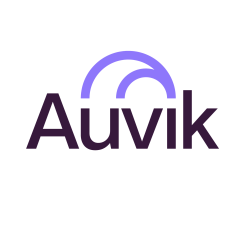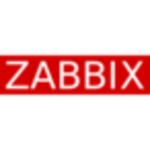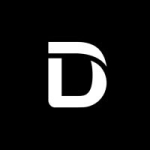What is our primary use case?
I'm a system administrator. I use it to monitor and automatically draw a network map of our network.
How has it helped my organization?
It has helped us determine better ways to organize some of our physical networking, and it also allowed us to locate and troubleshoot issues more quickly.
It saved me at least a couple of days of work in regard to network mapping. There's a lot of detail that it figures out automatically that otherwise, I would have to do manually. It definitely helped that way. The monitoring is a little bit redundant. We already get emails for some of the things it warns us about, which is fine, but it also warns us about other things that we are not aware of. It saves me some time that way as well.
The network visualizations are quite intuitive. It comes with a number of different controls to manipulate, monitor, and change the visualization of what you're seeing. They're pretty intuitive and don't require many instructions.
We recently opened up a branch office, and it allowed us to visualize that remote network in more detail than we would have before. This visibility is quite important so that we have a better understanding of the way the network is configured and if there are any problems with it. Before, we had no way to visualize which devices were connected to other devices. It just had to be common knowledge or certain documentation, but now, we can visualize our network in real-time and troubleshoot if any issues arise.
What is most valuable?
Automatic network mapping, alerting functionalities, and TrafficInsights are valuable.
The monitoring function is quite easy. It's already set up with a lot of good defaults. So, I didn't have to change too much. The management function is also pretty useful. The interface sometimes takes a little bit of learning to navigate, but besides that, it has been pretty useful so far.
I like the methodology of its deployment and how it's set up. I like how we simply have to put a simple virtual appliance in our environment, and it figures out everything for us. The methodology of how it's designed to be used from that cloud environment works well.
What needs improvement?
Some of the network map customizations could be improved to show or hide certain components if desired. There are already some tools built in to do that, but they could be improved upon.
Some of the discovery methodologies could be improved upon. It removes the device that is offline, but when that gets added back, if there is any custom information saved for that device, such as it's a smartphone, you have to change and reenter the information all over again. It would be nice to not have to manually modify certain devices that get added to the network.
I would give it pretty good marks in terms of helping to visualize the network mapping or the topology of our organization, but sometimes, the map refreshes in a way that doesn't always make sense. I have to create a support ticket to ask why the map is showing things the way it's showing, but that's more of a learning curve related to learning about the tool itself, but for the most part, it automates that whole process quite well and makes it easy to see what's on the screen.
There could be a mobile app or some type of mobile interface to review details on the go. I haven't tried it yet, and I am not sure if there's one.
For how long have I used the solution?
I have been using this solution for approximately three to four months.
What do I think about the stability of the solution?
For the most part, it has been quite reliable and stable. There have been a few maintenance windows recently where they needed to fix some issues. It didn't affect me per se, but there was a little bit of downtime for the problems they were having with the collectors. They had to push an update for it, but it didn't concern me too much because it was over the course of a weekend. So, I wasn't paying too much attention to it. I would rate it an 8 out of 10 in terms of stability.
What do I think about the scalability of the solution?
It seems it would scale very well to a large network, but I don't have experience with it in that scenario. From the way the tool works, it seems that it would be able to map out quite complicated networks and all the details.
Currently, Auvik is monitoring about 220 devices in our organization.
How are customer service and support?
Their support is excellent. I've reached out to their support a couple of times, and every time, they've been very professional and quick to respond.
I reached out to them recently, and there was very quick detailed research done into the issue. It wasn't a simple issue, but they were able to dig into it and get back to me with some good detailed answers.
I would rate them a 10 out of 10. So far, my experience with their support has been good.
How would you rate customer service and support?
Which solution did I use previously and why did I switch?
We used PRTG, but we didn't necessarily switch. We're using both. We're still using PRTG, and we're also using Auvik. So, for managing the network, we are now using two tools. Previously, we used one tool, but now, we're using two tools.
How was the initial setup?
It was straightforward. We implemented it out of the box. Network mapping started to populate in less than 15 minutes after implementing the collector. So, once it's configured, it does the job very quickly.
Its setup time is similar to other solutions. It takes a few hours of installation and configuration and then going from there, you just wait for it to collect the data.
It takes a little bit of time to configure and make sure that it's scanning and pulling in the right information. Some of the information, such as the system name and the type of the system, needed to be updated manually. So, a little bit of manual work needs to be done after the setup, but once it's properly set up, it does help to save time. It took extra three to four hours just for configuring and manually making changes to improve the data collected.
In terms of maintenance, it does require maintenance. On occasions, I need to clean up and monitor unknown and generic devices that show up in the list of devices just to determine if they are trusted devices that should be on the network. So, it's used for seeing what's on the network and paying attention to those devices that get added. We then ensure that they're trusted and should be on the network.
What about the implementation team?
I implemented it on my own. I also take care of the maintenance. I do have other users with access to the service, but they only use it for monitoring. They don't make the changes.
What was our ROI?
We have seen time-to-value with Auvik. It's able to automatically make network maps that otherwise would take a lot of time. It would also take time to customize them manually. So, it has helped automate that task for sure. It has definitely saved about 48 hours.
We haven't seen a reduction in our meantime to resolution (MTTR) because I can't think of any situation where the tool has been involved in those types of scenarios per se. It's more to show the information that we were already aware of. So, it didn't necessarily change that for the better or worse. In the future, there might be a problem where it'll help us troubleshoot deeper by using some of the tools that we didn't have before, such as TrafficInsights.
What's my experience with pricing, setup cost, and licensing?
It's quite reasonable, although it's reasonable for us right now only because of the small number of devices we're using. If we had a lot more to monitor, then I'd have to double-check the pricing and compare it with other solutions to see if it would be competitive.
To someone comparing network monitoring solutions but concerned about pricing, I would suggest that trying the product first is key and based on that, you can determine the value. I find the pricing to be reasonable, and I was able to try it first to make my decision.
Which other solutions did I evaluate?
We didn't evaluate other options. I knew about using Auvik from a previous employer. They had a good trial setup. The reason why I used it in the first place was that I was looking for tools to do network drawing or mapping, and I was aware that Auvik could do that type of work automatically. So, I just signed up for the trial and went from there.
What other advice do I have?
I would suggest letting the tool add all of the networks automatically first as opposed to manually adding certain details and letting it fill in. Just let it gather all the information it can and then worry about cleaning things up.
Also, I would advise monitoring generic and unknown devices just to understand what is present in the network. I would also advise getting familiar with filters and setting up filters in a way that allows you to customize the tool to suit you best.
Auvik has a single site that allows us to perform a number of dedicated tasks. Having this single site is moderately important for us because we do use other tools as well to collect data on what we're looking for. We're always looking for tools to add to our listing. We don't just always rely on one tool to do all our monitoring. This is an additional tool that we're using, but it offers functionality that our other tools don't necessarily have. That's why we're using it.
Auvik hasn't helped reduce repetitive low-priority tasks through automation because we're just using it for some passive monitoring. I can't think of a situation where that's had to occur per se.
Its automation hasn't had an effect on our IT team's availability. More time has been spent in the software configuring it, and now that it's set up the way we want it, we just go into it every once in a while to browse and see how things are going.
I would rate it an 8 out of 10. There are a few things to improve on, but for the most part, it does exactly what I'm hoping to do, which is automatically help generate a visualization of a network to better understand it and troubleshoot it.
Disclosure: PeerSpot contacted the reviewer to collect the review and to validate authenticity. The reviewer was referred by the vendor, but the review is not subject to editing or approval by the vendor.


















